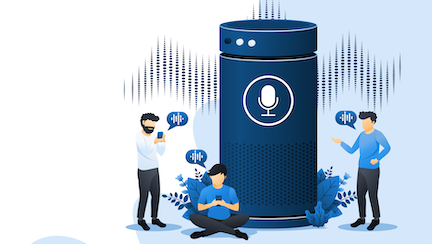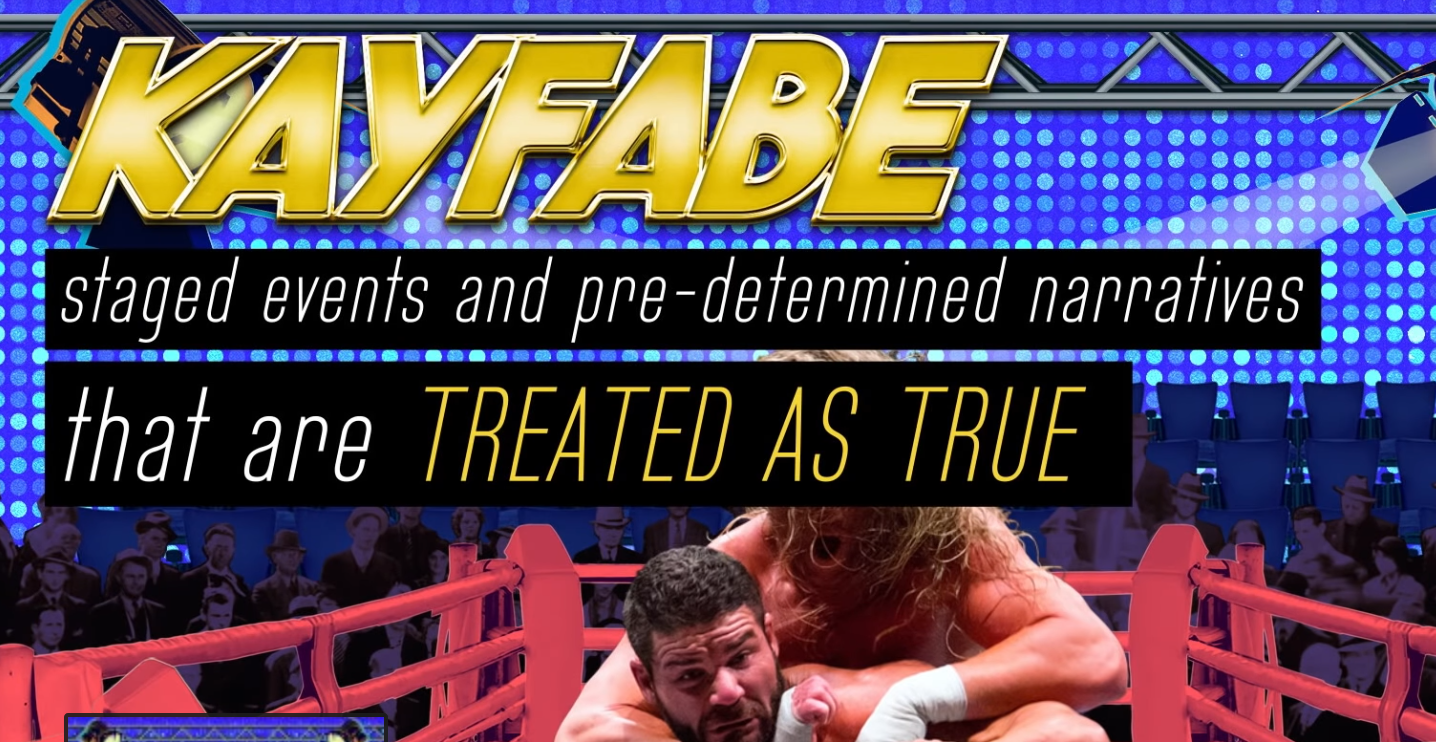
The deliciously dangerous and euphoric period of a con game.
A con game is a form of marketing. How it’s different or what can make it illegal is in what you are selling.
A con or con game is essentially a process of persuasion that results in a transaction that gets one person to trade something of value to another.
A con game is essentially marketing and sales.
It can be a transaction where the “customer” gives the buyer money, allegiance, or an item of value. However, once the transaction is completed, the buyer feels criminally deceived by the value they actually receive for their trade.
Why teach content people about a con?
I’m not saying you should learn how to do a con, but a con is a sales technique. The process and techniques of a con are something that a content person should learn. Especially if you wish to improve creating content and arguments that persuade other humans.
For those who may be the target of a con, it’s important to learn how to see the signs of a con. Especially as a con can happen anywhere or anytime you are being sold something. Whether that is around politics, stocks, medical cures, products, etc. So let’s get started.
Origin of the phrase con artist.
Do you know where the term “con” as in con artist or con-game came from?
It was based on the swindles of Samuel Thompson. Who would be known as the original “confidence man.” In the 19 century, Thompson approached his victims by asking them to “express confidence in him” by giving him money or their watch. To his delight, some people complied and he kept what they lent him.
Seeing people give up something as valuable as a watch shows that the power of people to comply with a con is amazing. But where does that power to make this deceptive transaction come from?
It’s essentially a trade driven by a euphoric or unsubstantiated feeling. The “con” in confidence man, is about pumping up your confidence and emotions to take an action. The key emotional feeling: euphoria.
The euphoria period of a con (con game).
It starts soon after you buy into the game. It ends just as the illusion of the game’s prize or virtue is suddenly whisked out from beneath you like table linen on a dinner table. A quick and often jarring snap back to reality. Like when those who lent Thompson their watch realized it wasn’t going to be returned.
The euphoria period of a con game exists in that window when the promises and joy of a deceitful offer still seem possible. This period is also the hardest time for those experiencing it to see reality or risk.
While Thompson helped coin the term, con games or cons have been with us ever since human beings had something to trade with each other.
The fairy tale Jack and the Beanstalk is really about Jack lucking out after what most readers would see as a con. A cow for some “magic beans.” While those magic beans worked out for Jack, the seller sold them believing that they would not and his Jack was naive enough to have confidence in him, so the intent was to defraud or to con Jack.
The elements and tools used in any con are interchangeable.
It could be the Nigerian prince email offering your $1 million for helping them out of a financial pinch. It could be a political saying he can bring your old industry back if you vote for them.
Whatever it is, the essence of most cons is the promise to deliver a fleeting feeling of euphoria or unjustified satisfaction. The joy that you gained something or are getting away with something almost beyond what you feel you deserve or could get on your own. A fantasy realized.
That’s why the con is seductive. A magical or transformative moment dangled in front of us as obtainable.
A con game is scalable.
When a con is accepted by the masses it becomes even more powerful and scales in seductiveness among the populace. Snowballing and getting bigger as it now carries the authority of social proof.
Just a few decades ago, people excitedly followed other people who believed that buying Beanie Babies was a financially smart investment. Only to be holding worthless cloth filled with beans.
Why did they fall into the con?
To accept the con is to suspend reason and create space for the bliss of the ideal.
Imagine what you’d do with the Nigerian prince’s money?
That multi-level-marketing person is telling you that you’re going to be a successful business person by buying their product to sell to your friends and even get your friends to sell it for you. Even though the math behind MLMs say it’s impossible.
A con is a transaction. Just not a good one.
Unbeknownst to one party, it is an asymmetrical trade. The seller knows the true value of the deal isn’t what the buyer expects.
Because it’s a con, the logistics of both parties being satisfied in the end are pre-determined for failure. But until then, what an amazing world of possibilities. A feeling that everything is possible. A fleeting feeling many will pay for.
While not all religions, some televangelists fall into this category. Selling people through their TV screens that the hope of a better life is nigh you just send them money. Some send their money and that act of hope turns in to the excitement of that new life they just put a down payment on. I just need to wait for it to get there. And they wait. And wait.
The phenomenon isn’t just limited to straight-out fraud. This also happens is “legitimate” purchases of a little boy ( I won’t say who) 20-plus years ago. Like the X-ray specs that kids use to buy in the back pages of old comic books.
The euphoria for those buying the glasses was imagining all the things you could do with the Xray specs. Finally, I can see what my neighbors are doing next door.
The mix of believability and possibilities. It’s the euphoria period. The time you believe the promise is happening or will happen.
Until my Xray specs fantasy was ruined by some flimsy, cheap plastic glasses arriving in the mail that just made what I saw through them opaque, my $10.95 plus tax looked like an amazing bargain.
Was I cheated? Not really. As a kid and like many adults, my excitement focused on the fantasy and not the fine print.
For those who seek to profit from a con, the euphoric window is the key.
It reminds me of the quote attributed to billionaire Warren Buffett about investing. He says that it is wise to be “Fearful when others are greedy and greedy when others are fearful.”
He’s essentially asking investors to see and seize that window for the opportunity and look past the emotionally led hypnosis consuming others.
To do so, it’s important not to be caught up in the euphoria driven assumption of others. Like with investments or a roaring stock market, as others are caught up in the idea of wealth and are greedy for the fantasy, they may not be able to see the party end, as all economic cycles do. Or when they are caught up in the fear of a bear market, they may not risk change to jump at the opportunities.
As our emotion is powerful, you need to be able to keep yourself rooted in a truth or a principle that tethers you to reality. That firm base will give you the logical leverage and perspective to know how to act differently and the emotionally driven consensus.
Mass con. Mass euphoria.
As mentioned before, a con is scalable across the masses. Limited only by how many are willing to believe the story.
Bernie Madoff made people believe he had the secret to making them rich. Tech companies in the 1990s brought in people who invested with them, even though some were simply burning a lot of peoples’ invested money with shows and parties while not making a profit. Investors simply relied on the hope that this new thing called the internet was magic. And this company does the internet.
In housing during the 2000s, people accepted the story that housing and buying a house is always a good investment because “housing prices always go up.”
Then, one day. Pop. The euphoria of the con ends.
The dot.com companies busted. Bernie Madoff is arrested for running a Ponzi scheme of paying older investors with new investors money to keep the scam going. And having no money or facing loans re-setting to astronomical heights on homes they were told they could afford, Americans were forced out or fled homes as they foreclosed.
The game ended along with the euphoria.
How can you spot the euphoria from the outside?
Business transactions. Economic models. Businesses and political moments that are driven as cons have these components.
Clue 1: The growing belief that the rules of the game are different this time for this idea.
People see an opportunity that breaks norms, rules, and history. They understand the norms but believe that this instance or opportunity is an exception. I believed my Xray glasses had the ability to somehow get around the laws of physics so I could see through things.
Clue 2: Those who aren’t caught up in the emotion, or offer contrary information are summarily dismissed as haters.
A person who knows the truth is dangerous to a con artist as they can bust the bubble of euphoria. So a common tactic, discredit them.
A group of economists and financial journalists spoke out about the housing bubble of the 2000s as it was happening. Often the voices are drowned out by those who have a financial or emotional interest in keeping the belief going. Particularly mortgage lenders, Wall Street investors, and realtors.
The current leader of the free world tends to attack sources of information that don’t conform to the official point of view.
Clue 3: The con optimizes the game allowing more marks and allies to get involved.
Some people who do know the game is rigged, don’t speak out to burst the bubble. Instead, they want a slice. They believe they will make money by simply going along. Like the banks offering highly risky NINJA (No-Income-No-Job) loans) to borrowers who couldn’t afford homes because they knew they could resell the loan, get paid for reselling, and not be on the hook if the lender fails. It is credit rating agencies that did not label bad investment risks on these same loans because it could hurt their firm’s standing and revenue with financial firms that wanted those loans to go through.
This passive acceptance of a scheme by all parties also creates the illusion that “everyone says the water’s fine. Jump in!” Social proof that can fuel the con.
Clue 4: Those who benefit from the con won’t tell you the music has stopped.
The music I’m referring to is a metaphor for the mood around the con game. If it were a song it would be “Happy Days Are Here Again.”
What the people who set the tone around the con that everything’s great. Keep going!
Many con games often give signals that they are about to end.
However, when the con is about to collapse, that music gets harder to hear. It might have even stopped. It’s a change that might catch your attention. You might look to the people promoting the scheme as if to say “hey, what’s going on?
The con artist likely knows the game is up and the music is over and it’s time for them to get out if they can.
But to you, they’ll suggest that the pause you hear is just part of the music. A dramatic pause or “This is a momentary glitch.” Little excuses that usually buy time for the people at the top of the con to wrap up and get the hell out before the public catches on and euphoria dies.
They are the people that sell their stocks before the public knows. Or moves their money to safety or untouchable locations. The point is that they are still using their asymmetrical information about the issue to their advantage over those who still don’t understand yet.
Clue 5. The con artist. “It’s not my fault, you chose to believe me.”
When the dust settles and people invariably look for the bad guy, the con artists are quick to remind the mob with torches, that it was their decision.
Here’s the thing. You know what, they’re usually right.
In most cases, the con-artist painted a picture that was too good to be true. Loans with no assets or income? Build a wall and Mexico is going to pay for it? Ideas that were ridiculous on their face.
Ridiculous ideas pushed by people of questionable morality. But ultimately, it was the buyer’s decision. There were also two choices. One: believe the story that feels good or two: rigidly check the story and decide.
The euphoria made us feel so good, it didn’t seem like a choice, so we chose to ignore option number 2. At that moment, we chose to be lemmings.
Problem with being lemmings, they don’t look at where they are going as they run like a waterfall of animals over cliffs and fall to their death. They are only trained to follow the ass of the other lemming in front of it. Don’t just look ahead. Look ahead of the pack or what’s presented and try to see the destination or rational endpoint to make sure it’s not a cliff.
While the cliff is unfortunate, it’s still a choice.
When the euphoria of a con game ends. The choice always seems so obvious in hindsight.
And It was in real-time… to anyone using information and rationality. But in the euphoria of a con, both are in little supply.
We just have a good feeling. And feeling and hope blind us to the future. One we may not like the consequences.






























